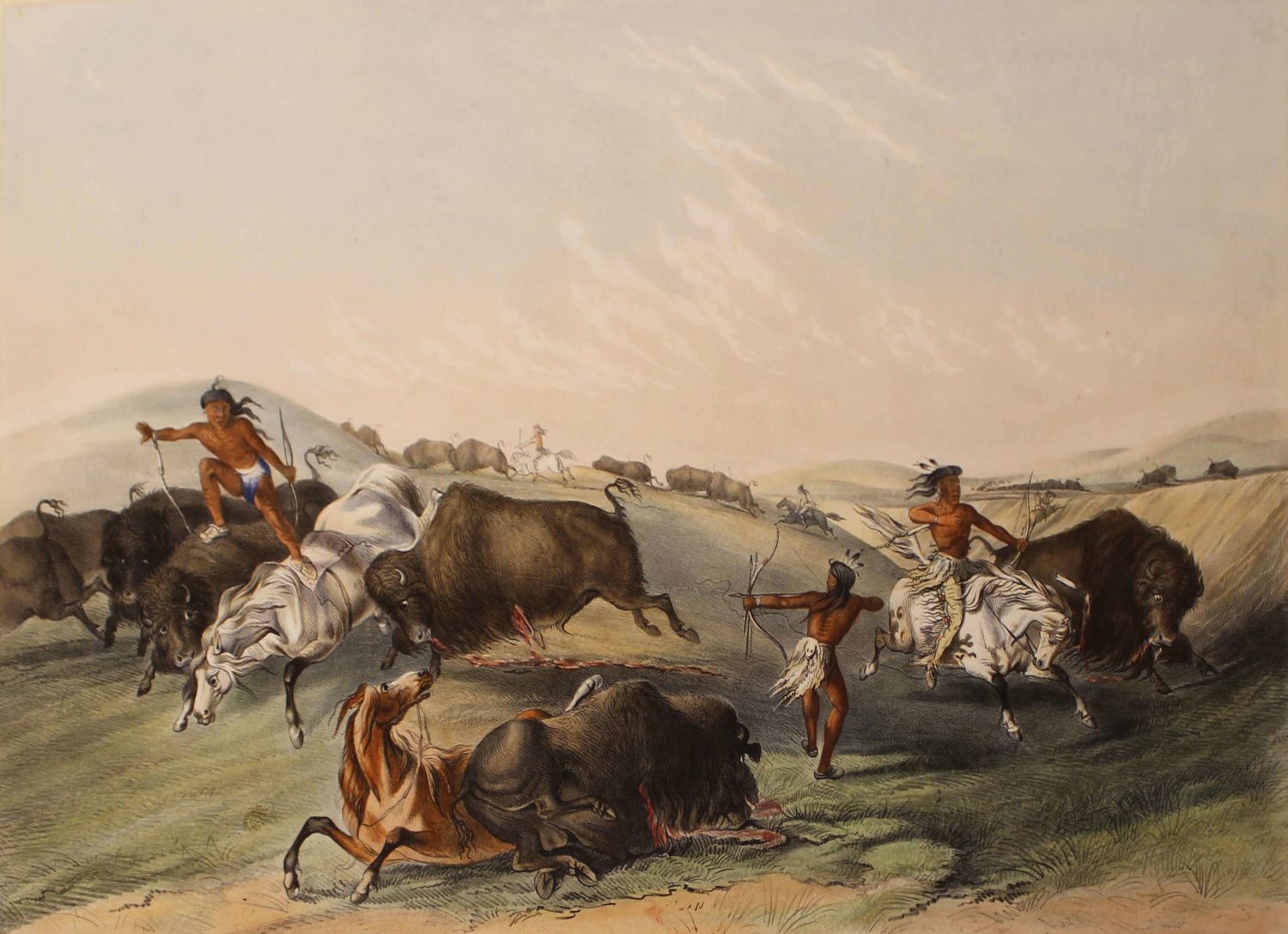- Artist:George Catlin
- Medium:Hand-colored lithograph
- Size:11.5" X 17.5"
- Year:1844
- Price:$3,200.00
- Description:Plate #7 of Catlin's "North American Indian Portfolio: Hunting Scenes and Amusements of the Rocky Mountains and Prairies of America" 1844. "In this plate is represented a number of the accidents of the chase, with all of which the sportsman in that country will soon become acquainted. There is also seen here another variety of the “rolling” prairie; and the effect of the Indian’s deadly weapons forcibly displayed; likewise a party of Indians dashing amongst a herd of buffaloes in a ravine, from which they are “breaking” in various directions; and men, horses, and buffaloes are meeting the accidents and alternatives here represented, which are familiar in the country. In the midst of precisely such a scene I was thrown, in a desperate chase by a party of Sioux Indians, near the mouth of the Teton River, on the Upper Missouri. The buffalo is a harmless and timid animal until severely wounded, or closely pursued, when it often turns upon horse and rider with great range and shocking disaster, unless a sudden escape can be made from its relentless fury. When closely pursued by the horse, and held a little too long is familiar company, the bull will often suddenly wheel around, receiving horse and rider on his horns, at the imminent hazard of the limbs and lives of both. In this group is seen the position and expression of the Indian and the buffalo, at the moment the arrow has been thrown and buried to the feather in the animal’s side. In the front of the picture, the wounded bull is seen dying, whilst wreaking his vengeance upon the horse; and on the left, another bull gorging the horse of his assailant, who is forced from his seat and obliged to pass over the backs of several animals, which is often the case when they are running in numerous and confused masses. In this instance is seen the blade of the arrow protruding from the wound of the opposite side of the animal to that where it entered, one of the frequent occurrences of the kind, illustrating the great force with which the Indian’s arrows are occasionally sent, passing entirely through the animal’s body. I have been familiar with these hunting scenes of the Indians for several years, and have sometimes, for months together, almost daily, joined in them myself, which I have beheld man hundreds of them slain. I have several times seen the Indian gallop his horse around, and, leaning from its side, snatch his arrow from the ground, half buried in the earth, and covered with blood, having passed through the animal’s heart on its way. The numerous results which I have closely studied, of the deadly effects of the arrow, have fully convinced me that, in the hand of a skillful hunter on horseback, at the little distance the arrow is required to be thrown, the bow is a far more efficient weapon than the best firearm that could be produced. The aim is as true, the shots can be six or eight to one, and I venture to say that each shall be fully equal and more certain of securing the animal. I know, from experience, that the buffalo will often lead us a long and fruitless chase with two or three ounce bullets through its body, when, if pinioned with an Indian’s arrow, it would stand and submit to a second through its heart, bringing it to the ground."
1 in stock
Category: Prints

